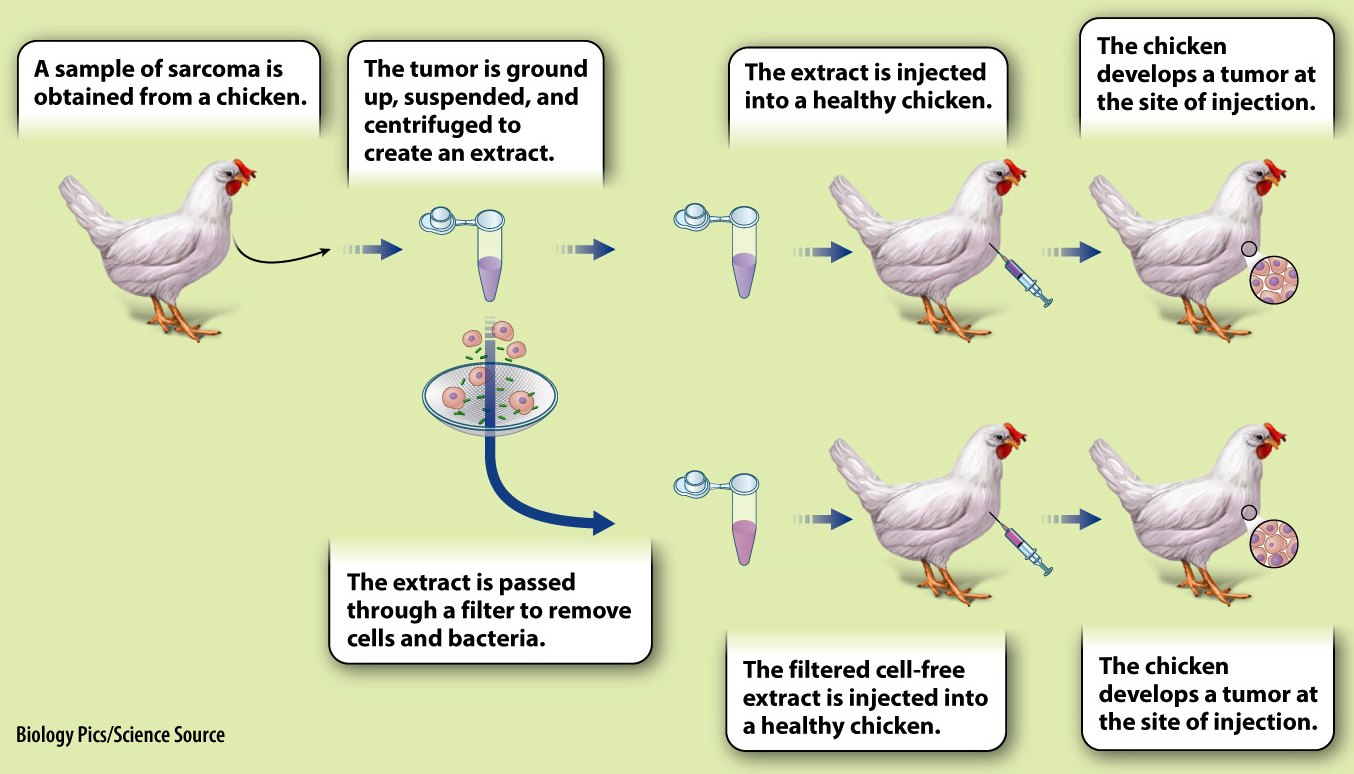HOW DO WE KNOW?
FIG. 11.19
Can a virus cause cancer?
BACKGROUND In the early 1900s, little was known about the cause of cancer or the nature of viruses. Peyton Rous, an American pathologist, studied a form of cancer called a sarcoma in chickens. First, he moved a cancer tumor from a diseased chicken to a healthy chicken, and found that the cancer could be transplanted. Then, he tried to isolate the factor that causes the cancer in chickens. He made an extract of the tumor, filtered it to remove all the cells, and injected the extract into a healthy chicken to see if it could induce cancer.
HYPOTHESIS Experiments in other organisms, such as mice, rats, and dogs, showed that an extract free of cells from a tumor does not cause cancer. Therefore, Rous hypothesized that a cell-
EXPERIMENT Rous took a sample of the sarcoma from a chicken, ground it up, suspended it in solution, and centrifuged it to remove the debris. In one experiment, he injected this extract into a healthy chicken. In a second experiment, he passed the extract through a filter to remove all cells, including cancer cells and bacterial cells, and then injected this cell-
RESULTS In both cases, healthy chickens injected with the extract from the sarcoma developed cancer at the site of injection. Microscopic examination of the cancer showed it to be the same type of cancer as the original one.

CONCLUSIONS AND FOLLOW-
SOURCES Rous, P. 1910. “A Transmissable Avian Neoplasm (Sarcoma of the Common Fowl).” J. Exp. Med. 12:696–